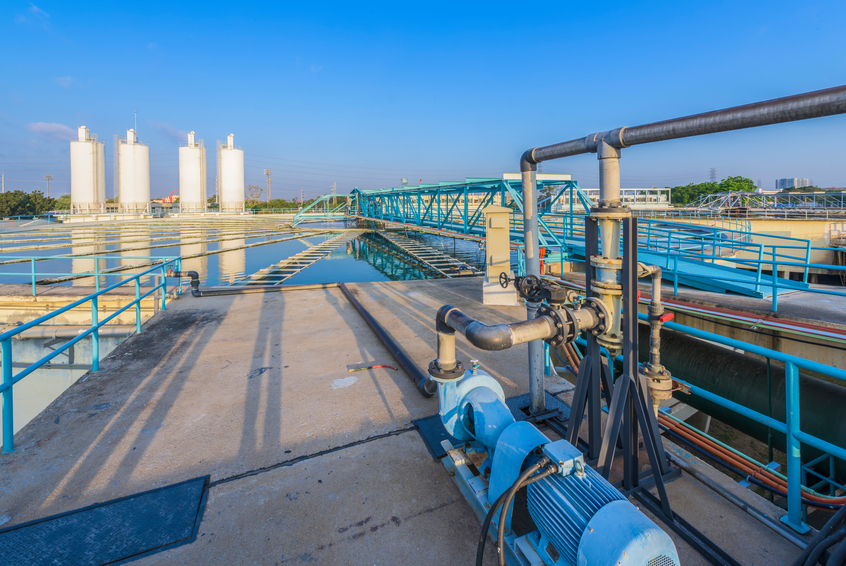Nova Scotia Industrial 40 PDH Discount Package
Improving Process Heating Systems Performance (M05-026)
Overview of Steam Traps (D04-001)
Planning and Design of Hydroelectric Power Plants (S04-002)
Pneumatic Conveying Systems (M05-010)
Process Controls for Industrial Facility Systems (D05-001)
Steam Distribution Systems (D02-008)
Steam System Basics (D04-004)
Steam System Basics and Energy Efficiency (D06-004)

This online engineering PDH course provides a basic understanding of instrumentation and control necessary for safe operation and maintenance of energy facilities and their support systems. In particular, this course describes the principles of construction, operation, and failure modes for various types of detectors including temperature detectors, pressure detectors, level detectors, flow and position indicators.
This 5 PDH online course is applicable to mechanical, industrial and nuclear engineers, construction and design personnel, technical staff and facility operators who are interested in gaining a better understanding of detector applications.
This P.Eng. continuing education course is intended to provide you with the following specific knowledge and skills:
- Learning the different types of equipment detectors and indication circuits
- Understanding the operation of equipment detectors and indication circuits
- Knowing the failure modes of equipment detectors and indication circuits
In this professional engineering CEU course, you need to review Modules 1 through 5 of the Department of Energy Publication DOE-HDBK-1013/1-92, "Instrumentation and Control".
Upon successful completion of the quiz, print your Certificate of Completion instantly. (Note: if you are paying by check or money order, you will be able to print it after we receive your payment.) For your convenience, we will also email it to you. Please note that you can log in to your account at any time to access and print your Certificate of Completion.

This online engineering PDH course describes basic process heating applications and equipment, and outlines opportunities for energy and performance improvements. It also discusses the merits of using a systems approach in identifying and implementing these improvement opportunities for Fuel-Based and Electric-Based heating systems. Furthermore, it provides recommendations to financially justify process heating improvement projects (System Economics).
Process heating is essential in the manufacture of most consumer and industrial products, including those made out of metal, plastic, rubber, carbon fiber, concrete, glass, and ceramics. Process heating systems are broken into three basic categories: Fuel-Based Process Heating, Electric-Based Process Heating, and Steam-Based Process Heating all of which are discussed in details.
This 5 PDH online course is applicable to mechanical, industrial and process engineers, designers, manufacturers and all personnel involved in the planning, design and installation of process heating systems.
This P.Eng. continuing education course is intended to provide you with the following specific knowledge and skills:
- Understanding the basics behind process heating operations
- Familiarizing with the common types of process heating systems and equipment
- Recognizing efficiency opportunities for fuel-based and electric-based heating systems
- Learning how to financially justify process heating improvement projects
Upon successful completion of the quiz, print your Certificate of Completion instantly. (Note: if you are paying by check or money order, you will be able to print it after we receive your payment.) For your convenience, we will also email it to you. Please note that you can log in to your account at any time to access and print your Certificate of Completion.

This online engineering PDH course provides an overview of this essential component and discusses the operation, selection, installation and maintenance criteria of various steam traps for different applications.
No steam system is complete without this crucial component "the Steam Trap". This is the most important link in the condensate loop and the steam system, as it connects steam usage with condensate return. By definition, a steam trap 'purges' condensate, as well as air and other incondensable gases, out of the system, allowing steam to reach its destination in as dry condition as possible to perform its task efficiently and economically. It is important that a steam trap must trap or hold back steam and not allow it to pass along with condensate or air. If not maintained or applied properly, it can result in significant energy wastage.
This 4 PDH online course is aimed at mechanical engineers, chemical engineers, process engineers, and system design engineers working in power, oil and gas, chemical, metal and mining, manufacturing and engineering industries. It is also intended for energy auditors and operation and maintenance personnel.
This P.Eng. continuing education course is intended to provide you with the following specific knowledge and skills:
- Understanding the functions of a steam trap
- Learning about the various types of steam traps; their advantages and disadvantages
- Understanding the selection criteria for the steam traps
- Knowing the system design considerations and the installation aspects
- Understanding the performance testing of steam traps
- Learning about the maintenance aspects and energy saving opportunities
- Understating the applicable codes and standards
In this professional engineering CEU course, you need to review the document titled "Overview of Steam Traps".
Upon successful completion of the quiz, print your Certificate of Completion instantly. (Note: if you are paying by check or money order, you will be able to print it after we receive your payment.) For your convenience, we will also email it to you. Please note that you can log in to your account at any time to access and print your Certificate of Completion.

This online engineering PDH course presents a discussion of the general, architectural and structural considerations applicable to the design of hydroelectric power plant structures. It is intended for guidance on establishing minimum criteria in the planning and design of such structures.
The engineering of hydroelectric projects is a highly specialized filed, particularly the engineering design and operational activities.
This 4 PDH online course is applicable to civil, structural and geotechnical engineers, as well as design and construction personnel involved with the planning and design of hydroelectric power plant structures.
This P.Eng. continuing education course is intended to provide you with the following specific knowledge and skills:
- Location selection criteria of powerhouse and switchyard
- Types of powerhouse structures and type selection criteria
- General arrangement of powerhouse and location of main transformers
- Installation of powerhouse and switchyard equipment
- Interior and exterior architectural design
- Determination of structural requirements
In this professional engineering CEU course, you need to review the US Corps of Engineers Publication EM 1110-2-3001, "Planning and Design of Hydroelectric Power Plant Structures".
Upon successful completion of the quiz, print your Certificate of Completion instantly. (Note: if you are paying by check or money order, you will be able to print it after we receive your payment.) For your convenience, we will also email it to you. Please note that you can log in to your account at any time to access and print your Certificate of Completion.

This online engineering PDH course presents an overview of pneumatic material handling system and summarizes the main hardware and technology attributes for efficient conveying.
From pebble lime to peanuts, from coal to baby powder - and everything in between - pneumatic conveying has long been a popular choice for moving bulk materials, either from storage facilities to a process unit, or between process units. Two most distinct categories of pneumatic conveying can be described as either dilute-phase or dense-phase systems. These have been developed over the past few decades to take advantage of the different behavioral properties of bulk materials and also to meet the increasingly demanding requirements of industry in the areas of system reliability, product quality control and energy efficiency. In particular, dense phase operation (with its relatively low velocities) is usually preferable if the conveyed material degrades easily or is highly abrasive. Selecting the correct pneumatic conveying regime for your requirements is a vital decision for a successfully designed system.
This 5 PDH online course is applicable to process/production personnel, mechanical and chemical engineers, and operation and maintenance engineers in the following industries who are involved in the following industries: chemical, petrochemical, agro-chemical, and specialty chemical, biotechnology, pharmaceuticals and cosmetics, food processing, mining/mineral processing, plastics processing, bulk storage, pulp and paper.
This P.Eng. continuing education course is intended to provide you with the following specific knowledge and skills:
- Understand the advantages of pneumatic conveying systems over mechanical conveying
- Understand the characteristics, limitations and fundamental design differences of dilute phase, dense phase and air activated gravity conveying
- Understand the design approach and typical specifications of positive pressure, vacuum and combination pull-push dilute phase conveying systems
- Understand the factors influencing the performance of pneumatic conveying systems and learn how conveying rates are affected by distances
- Understand the terms "saltation" and "choking" as applicable to pneumatic systems.
- Learn by example - the methodology for selection of prime mover for a dilute phase pneumatic conveying systems
- Gain understanding of pneumatic conveying system components such as fans, airlocks, separators, piping and filters
- Understand the three key reasons to use dense phase systems
- Understand the different modes of dense phase conveying
- Learn top ten tips for the design of dilute and dense phase conveying systems
- Learn how to estimate pressure drop in dilute phase conveying system
In this professional engineering CEU course, you need to review the course document titled "Pneumatic Conveying Systems".
Upon successful completion of the quiz, print your Certificate of Completion instantly. (Note: if you are paying by check or money order, you will be able to print it after we receive your payment.) For your convenience, we will also email it to you. Please note that you can log in to your account at any time to access and print your Certificate of Completion.

This online engineering PDH course provides a basic understanding of instrumentation and control necessary for safe operation and maintenance of energy facilities and their support systems. In particular, this course describes the principles of operation for control systems used in evaluating and regulating changing conditions in a process.
This 5 DH online course is applicable to industrial and nuclear engineers, construction and design personnel, technical staff and facility operators who are interested in gaining a better understanding of process controls.
This P.Eng. continuing education course is intended to provide you with the following specific knowledge and skills:
- Principles of control systems
- Control loop diagrams
- Types of control systems
- Controllers
- Valve actuators
In this professional engineering CEU course, you need to review Module 7, "Process Controls" of the Department of Energy Publication DOE-HDBK-1013/2-92, "Instrumentation and Control".
Upon successful completion of the quiz, print your Certificate of Completion instantly. (Note: if you are paying by check or money order, you will be able to print it after we receive your payment.) For your convenience, we will also email it to you. Please note that you can log in to your account at any time to access and print your Certificate of Completion.

This online engineering PDH course provides a basic description of the steam distribution systems along with an overview of the main associated components.
A steam boiler is virtually useless for heating without a good distribution system that transports the steam to the areas that require heating. In this course, the term distribution system refers to the network of piping required to distribute steam from a boiler room (or boiler plant) through the steam pipes to the equipment using the steam. The course discusses both exterior and interior systems, including their maintenance requirements and various associated components.
This 2 PDH online course is applicable to industrial and mechanical engineers as well as technical personnel interested in gaining a better understanding of steam distribution systems.
This P.Eng. continuing education course is intended to provide you with the following specific knowledge and skills:
- Understanding the different types of exterior steam distribution systems
- Familiarizing with the different types of interior steam distribution systems
- Learning the basic components of steam distribution systems as well as their operation and maintenance considerations
Upon successful completion of the quiz, print your Certificate of Completion instantly. (Note: if you are paying by check or money order, you will be able to print it after we receive your payment.) For your convenience, we will also email it to you. Please note that you can log in to your account at any time to access and print your Certificate of Completion.

This online engineering PDH describes steam systems using four basic parts: generation, distribution, end use, and recovery.
There are three principal forms of energy used in industrial processes: electricity, direct-fired heat, and steam. Electricity is used in many different ways, including mechanical drive, heating, and electrochemical reactions. Direct-fired energy directly transfers the heat of fuel combustion to a process. Steam provides process heating, pressure control, mechanical drive, and component separation, and is a source of water for many process reactions.
Steam has many performance advantages that make it an indispensable means of delivering energy. These advantages include low toxicity, ease of transportability, high efficiency, high heat capacity, and low cost with respect to the other alternatives. Steam holds a significant amount of energy on a unit mass basis (between 1,000 and 1,250 British thermal units per pound [Btu/lb]) that can be extracted as mechanical work through a turbine or as heat for process use. Since most of the heat content of steam is stored as latent heat, large quantities of heat can be transferred efficiently at a constant temperature, which is a useful attribute in many process heating applications.
This 4 PDH online course is applicable to mechanical engineers, design professionals, construction managers and technical managers who are involved with steam system design, installation and operation.
This P.Eng. continuing education course is intended to provide you with the following specific knowledge and skills:
- Steam system operation
- Generation
- Distribution
- End use
- Recovery
Upon successful completion of the quiz, print your Certificate of Completion instantly. (Note: if you are paying by check or money order, you will be able to print it after we receive your payment.) For your convenience, we will also email it to you. Please note that you can log in to your account at any time to access and print your Certificate of Completion.

This online engineering PDH course discusses the basics of steam systems, and provides a comprehensive technical overview of energy efficiency measures in steam generation, distribution, and use.
Steam is in heavy demand in industries requiring heating processes, and typically, it is an energy-intensive process to generate it. Optimizing the steam distribution system focuses on many different areas, with the boiler plant being just a part of the whole process.
Every part of the steam system, including the steam distribution and the end-use process, should perform at the highest efficiency to keep the operating costs to a minimum. The savings potential is enormous not only from a fiscal standpoint, but also from an environmental standpoint.
This 6 PDH online course is applicable to process engineers, energy managers, procurement and maintenance staff, operators, and all industry professionals involved in the design and operation of steam systems.
This P.Eng. continuing education course is intended to provide you with the following specific knowledge and skills:
- Familiarizing with the key components of industrial steam generation, distribution, and use
- Understanding the principles of perfect combustion, excess air, and air-fuel ratio
- Identifying the typical energy losses of boiler/steam systems in facilities
- Learning about low-cost practical strategies to improve the energy efficiency of boiler/steam systems
- Understanding the required measures to reduce stack and blowdown losses
- Learning how to improve the distribution side of the steam system and its end-use efficiency
Upon successful completion of the quiz, print your Certificate of Completion instantly. (Note: if you are paying by check or money order, you will be able to print it after we receive your payment.) For your convenience, we will also email it to you. Please note that you can log in to your account at any time to access and print your Certificate of Completion.